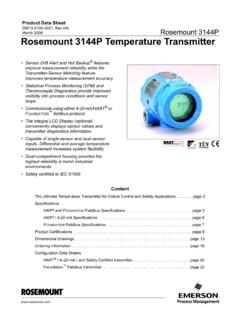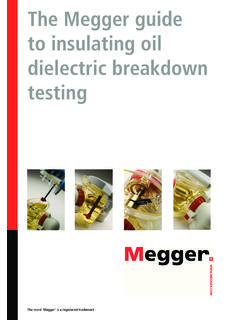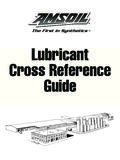Transcription of The Megger guide to insulating oil dielectric breakdown ...
1 The Megger guide to insulating oil dielectric breakdown testing The word Megger ' is a registered trademark Contents 1. 3. 2. What are the methods for testing oil?.. 3. 3. What is oil dielectric breakdown voltage testing?.. 4. 4. Who needs to perform dielectric breakdown voltage tests?.. 4. 5. Which types of insulating oil can be tested?.. 4. 6. Why, when and how often is oil testing performed?.. 6. 7. What are the test standards and their differences?.. 6. ASTM standards (USA).. 8. IEC standards (international).. 9. 8. How should an oil sample be taken?.. 10. 9. Preparing the test 12.
2 10. Why measure oil sample temperature?.. 13. 11. How do I know whether my test results are valid?.. 14. 12. How do I know if my fluid has passed the test?.. 14. USA ASTM and IEEE 15. International IEC 15. 13. Can new oil fail a dielectric breakdown test?.. 16. 14. Can I verify my test instrument performance?.. 17. 15. How do oil test sets detect dielectric breakdown ?.. 17. Testing silicone 18. 16. Choosing an oil dielectric breakdown voltage test 18. On-site versus laboratory 18. General instrument selection 18. Selection considerations specific to laboratory 24.
3 Selection considerations specific to portable 25. 17. Megger OTS range 27. Acknowledgments Megger gratefully acknowledges the support of John Noakhes of TJ/H2b Analytical Services for his help in compiling this publication. 2 The Megger guide to insulating oil dielectric breakdown testing 1. Introduction Oils that combine a high flashpoint with high dielectric strength have long been used as an insulating medium in transformers, switchgear and other electrical apparatus. To ensure that the dielectric strength of the oil does not deteriorate however, proper maintenance is essential, and the basis of proper maintenance is testing.
4 For over 100 years, Megger has been a world leader in the development and manufacture of test equipment for electrical power applications. The famous Megger trademark was first registered in 1903, and jealously guarded by the company. Megger 's experience in the design and production of oil test sets also reaches back to the early 20th century, when pioneering equipment was produced by Foster Transformers, a company that became part of Megger Group in 1968. Today, all of Megger 's oil test set design, development and manufacture is carried out at the company's manufacturing facility in Dover, England.
5 2. What are the methods for testing oil? For in-service equipment in particular, there are many test techniques for evaluating the condition of the insulating oil. If the technique of dissolved gas analysis is excluded, oil tests can be divided into two basic groups. The first group includes tests that are concerned with the immediate condition and acceptability of the insulation in an item of electrical equipment. This group includes dielectric breakdown voltage testing as well as moisture measurement by the Karl Fischer (KF) method, and determination of insulation condition by measuring the dielectric dissipation factor.
6 The Megger OTS range of dielectric breakdown voltage test sets The Megger KF range of moisture content test sets The Megger guide to insulating oil dielectric breakdown testing 3. The second group includes tests that look at the degree of degradation and aging of the equipment's insulation system. These tests include interfacial tension, acidity (neutralisation value), resistivity and visual determination of colour and appearance of the insulating oil. Typical oil colour specimens The darker the colour the more contaminants present Good Fair Bad While all of these tests are useful in particular circumstances, the most convenient and most universally applicable is dielectric breakdown voltage testing, which is why it has been selected as the subject of this technical guide .
7 3. What is oil dielectric breakdown voltage testing? Put simply, a dielectric breakdown voltage test is a measure of the electrical stress that an insulating oil can withstand without breakdown . The test is performed using a test vessel that has two electrodes mounted in it, with a gap between them. A sample of the oil to be tested is put into the vessel and an ac voltage is applied to the electrodes. This voltage is increased until the oil breaks down . that is, until a spark passes between the electrodes. The test voltage is then immediately turned off. The voltage at which breakdown occurred is the test result, and is typically evaluated by comparing it with guidelines set out in various standards, or in the oil manufacturer's specifications.
8 The exact method of performing the test is determined by the standard that is being used, as will be explained later. The standard typically defines parameters such as the size and shape of the electrodes, the gap between them, the rate at which the test voltage is increased, how many times the test is repeated and whether or not the oil is stirred during the test. 4. Who needs to perform dielectric breakdown voltage tests? There are many types of organisation that benefit from carrying out tests on transformer oil. These include: Utility contractors (principally in substations).
9 Utility companies (principally in power stations). Rail companies (locomotive HV step-down transformers and switchgear). Oil test laboratories (providing testing services). Transformer and switchgear manufacturers (quality control of oil). Oil companies (testing new oil during manufacture). 5. Which types of insulating oil can be tested? While the generic term oil' is almost universally used to describe insulating fluids, there are currently five different types of insulating fluid in common use. These are: Mineral oil High molecular weight hydrocarbon (HMWH) fluids Silicone fluids Synthetic ester fluids Natural ester (vegetable oil) fluids 4 The Megger guide to insulating oil dielectric breakdown testing All of these oil types can be tested for dielectric breakdown voltage and tested with Megger OTS range test sets.
10 Mineral oil is the most common insulating fluid and has been in use since the late 19th century. There are many mineral oil filled transformers that have been in continuous use for more than 50 years. Mineral oils are refined from either naphthenic crude or more recently, from paraffinic crude. HWMH, silicon, synthetic ester and natural ester fluids are more recent developments and are often preferred because they are much less flammable than mineral oil. ASTM D5222 specifies that for insulating fluids to qualify as less flammable' they must have a fire point of at least 300 C.










